Top 6 Interesting Facts about Poison Dart Frogs
Over 170 different species of poison dart frogs exist, however not all of them are lethal. While some are basic and absolutely non-toxic, others are colored to ... read more...demonstrate how severely deadly they are. They live in wet tropical forests like the Amazon in Central and South America's tropical areas. While the majority reside on the forest floor, some choose to reside higher in the canopy. They must be close to a water supply because they are amphibians. Do you have any curiosity about this animal? Let's follow Toplist to discover some interesting facts about poison dart frogs.
-
The majority of poison dart frog species are tiny, with adult lengths occasionally falling below 1.5 cm (0.59 in), while a few can reach lengths of up to 6 cm (2.4 in). On average, they weigh one ounce. The majority of poison dart frogs are colorful and exhibit aposematic patterns to alert prospective predators. Their high quantities of alkaloids and toxicology are correlated with their vibrant coloring. For instance, Colostethus species are cryptically colored and non-toxic, whereas frogs of the genus Dendrobates have significant levels of alkaloids.
A prime example of an aposematic organism is the poison dart frog. Their vivid coloring signals to potential predators that they are unpleasant to eat. According to evolutionary trees, aposematism is currently believed to have developed at least four times within the poison dart family. Since then, dendrobatid frogs have seen major intraspecific and interspecific divergences in their aposematic colouring. Given that this kind of defense mechanism is frequency-dependent, this is unexpected.
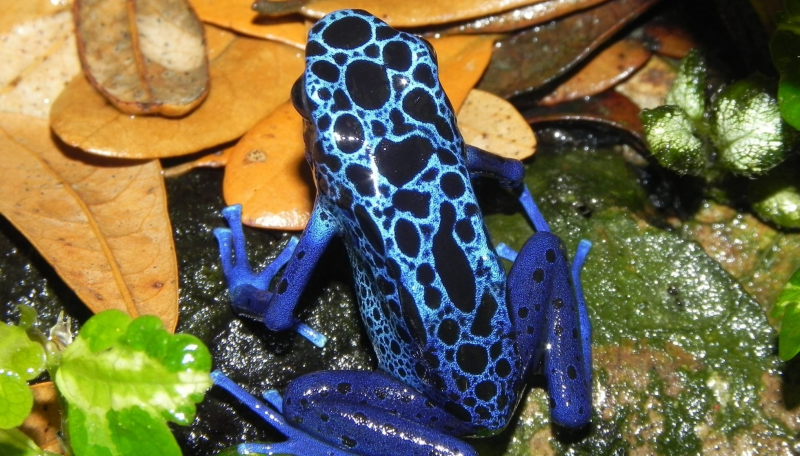
Photo: kidadl 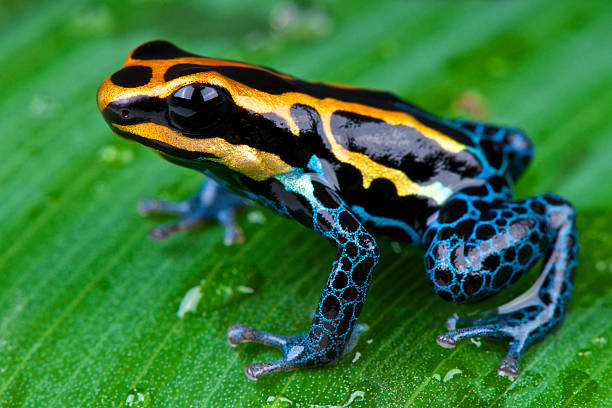
Photo: istock -
In a recent study, Styonski and colleagues examined strawberry poison dart frog tadpoles, juveniles, and adults to identify when the frogs acquire the deadly alkaloids that so successfully ward off predators.
The maternal role in strawberry poison dart frog reproduction is highly significant. In order to place each tadpole in a pool of water well above the forest floor, adult females would carry their young on their backs to bromeliads (plants related to pineapples that thrive in the canopy of tropical forests). Each tadpole needs to have its own pool; else, they will eat one another. The mother goes back to each pool and places a fertilized egg once all the tadpoles from a brood have been separated and placed in individual pools. This egg provides nutrition for the tadpole as it grows. This procedure lasts from one to five days.
Adult strawberry poison dart frogs typically obtain their venom from their diet of ants and mites. However, it makes natural that these tadpoles would be helpless given that they are only eating what their mothers offer them. But this is not the case. According to Styoski's research, Oophaga pumilio tadpoles receive their alkaloids from their mothers' unfertilized eggs as they grow. Juveniles have a higher potency than tadpoles but not as much as adults when they mature into the juvenile stage due to the initial accumulation of alkaloids provided by their mother and additional alkaloids supplemented by their food.
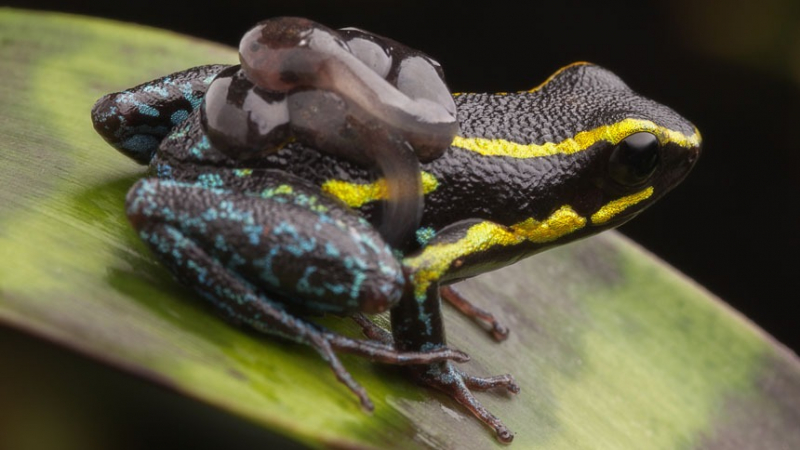
Photo: frogpets 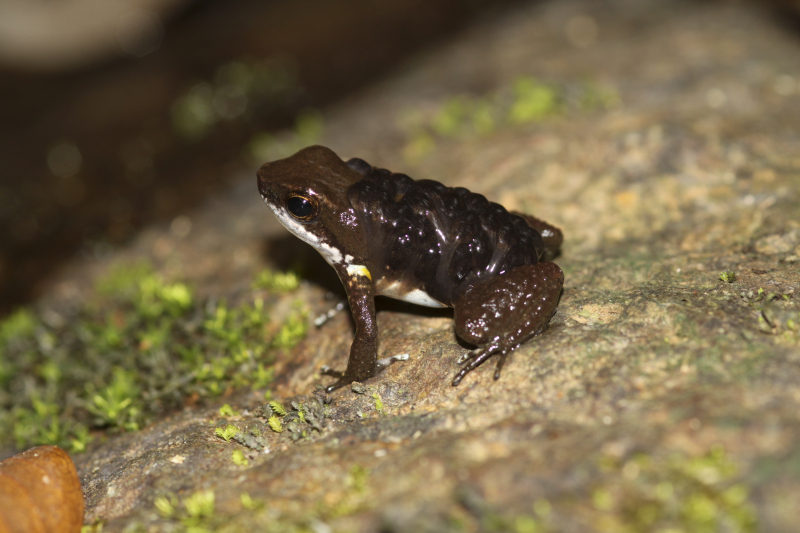
Photo: wikipedia -
Carnivores, poison dart frogs eat microscopic insects to stay alive. Fruit flies, termites, ants, baby crickets, and several smaller kinds of beetles are a few examples. One of the interesting facts about poison dart frogs is they are excellent opportunistic hunters who use their long, sticky tongues to quickly flash out and pounce on moving prey.
According to an intriguing argument put up by some experts, the diet of poison dart frogs caused them to become toxic. Given that many of the toxic insects in the rainforest. That over a lengthy period of evolution, the frogs become toxic by consuming these poisonous insects.
Since poison dart frogs were domesticated, this has shown out to be the case. Because they are fed a new diet of non-poisonous insects in captivity, animals lose their toxicity.
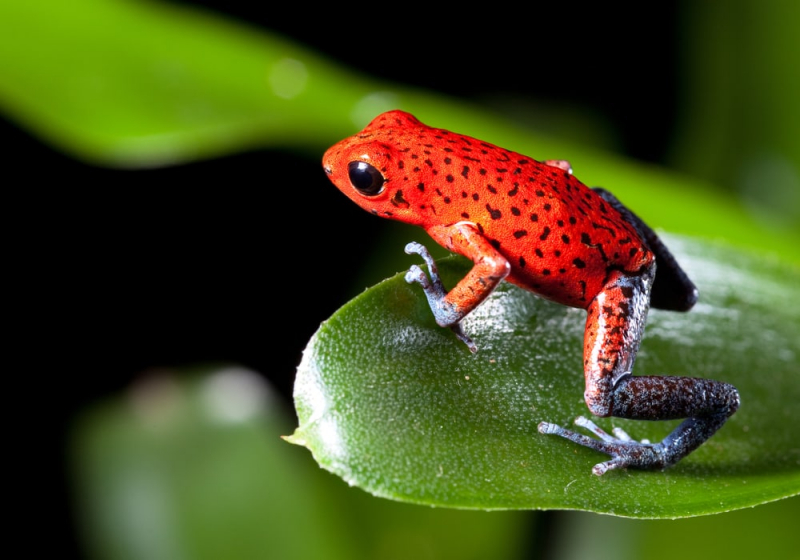
Photo: outforia 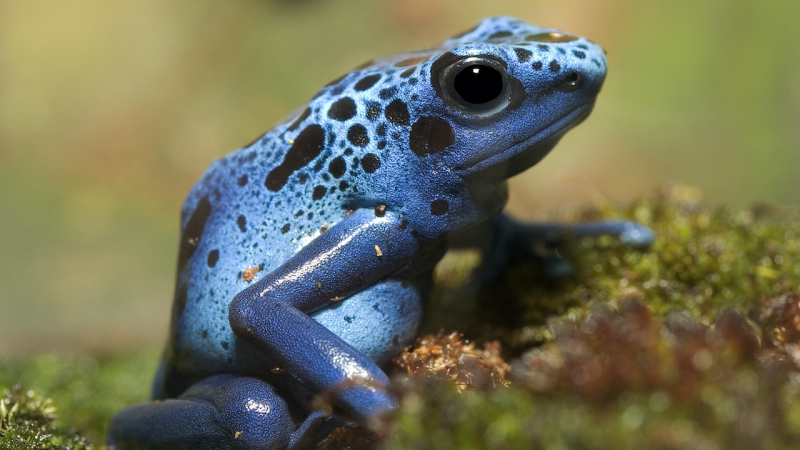
Photo: livescience -
Although not all poison dart frogs are lethal, those that do usually have a high level of toxicity. The frogs are dangerous to handle because they have poison on their skin to ward off predators.
Through their skin, numerous poison dart frogs release lipophilic alkaloid toxins like allopumiliotoxin 267A, batrachotoxin, histrionicotoxin, and pumiliotoxin 251D. The poison frogs' skin glands contain alkaloids that act as a chemical barrier against predators, allowing them to coexist with them during the day. The structural groups of alkaloids found in poison frogs number about 28. Phyllobates terribilis is the type of poison dart frog that is the most dangerous. According to the diet-toxicity hypothesis, dart frogs do not create their poisons; instead, they sequester the chemicals from their arthropod prey, such as ants, centipedes, and mites. Because they are raised on diets devoid of the alkaloids that are secreted by wild populations, animals raised in captivity do not have large levels of poisons in them.To put its toxicity into perspective, the Golden Poison Frog is the most lethal of the bunch. It is believed to have enough poison in its skin to kill 20 fully grown adults or 20,000 mice.
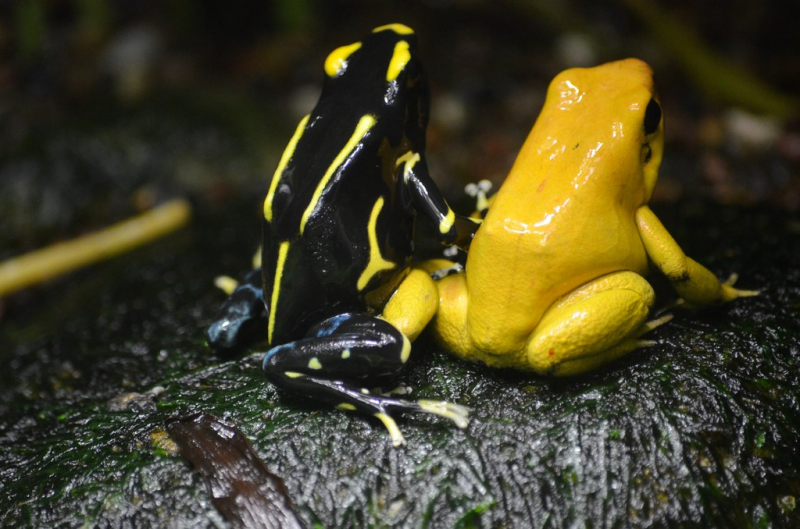
Photo: flickr 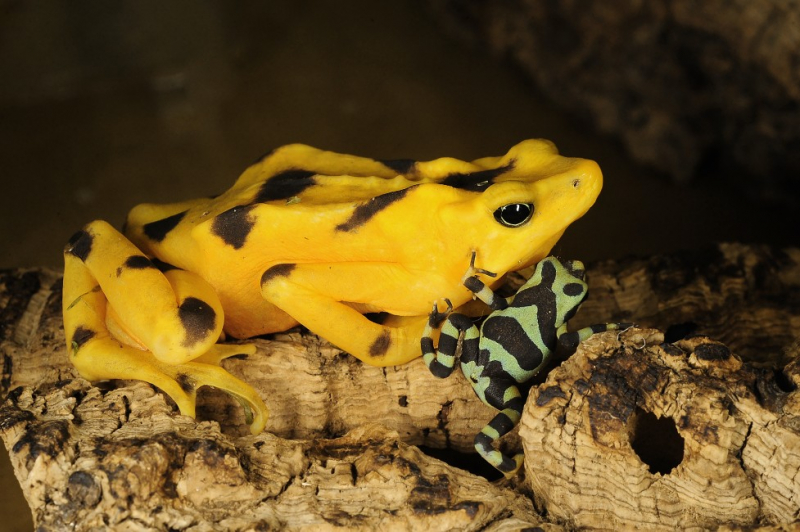
Photo: blog.wcs.org -
One of the interesting facts about poison dart frogs is research has shown that toxins from these frogs have various medical uses.
Epipedobates tricolor's skin contains chemicals that may be extracted and demonstrated to have therapeutic use. This toxin is used by scientists to create a painkiller. One such substance is epibatidine, a painkiller that has 200 times the potency of morphine but a therapeutic dose that is very close to the lethal dose. Tebanicline, an Abbott Laboratories-created derivative of ABT-594, advanced through human Phase II trials before being shelved for further research due to an intolerable frequency of gastrointestinal side effects. Additionally, promising as muscle relaxants, heart stimulants, and hunger suppressants are the secretions from dendrobatids.
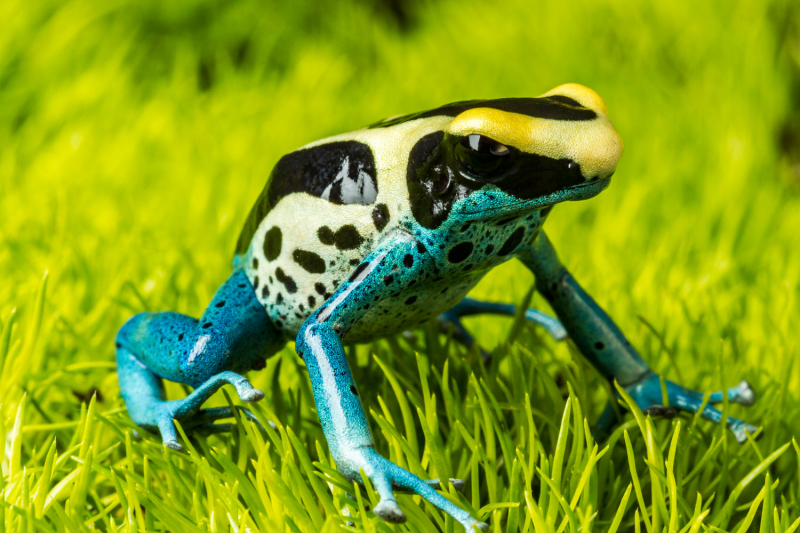
Photo: moriahquinn 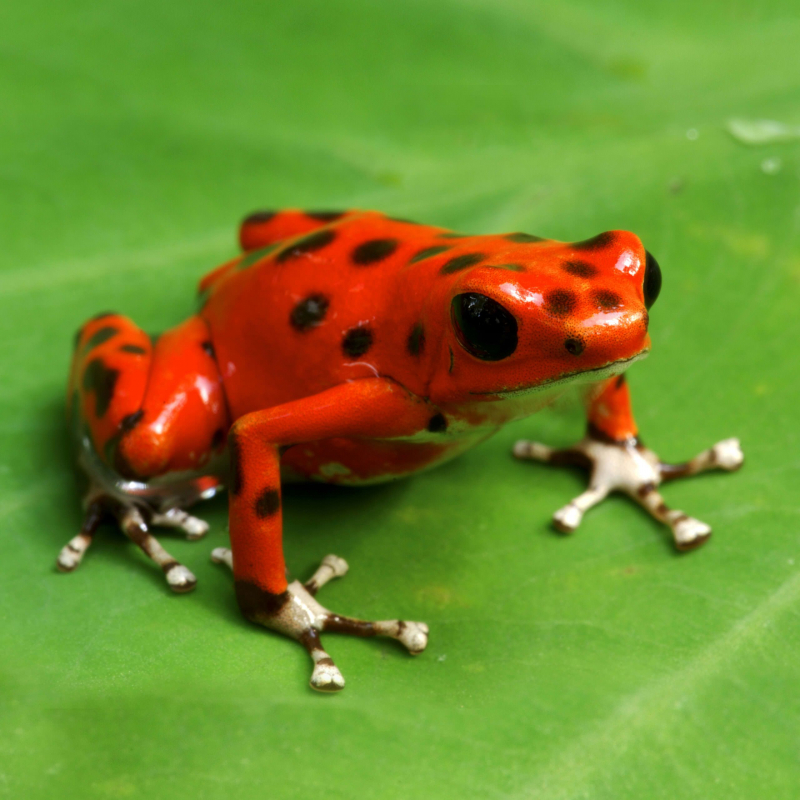
Photo: rainforest-alliance -
Sadly, a large number of poison dart frogs are now listed as endangered species. As human infrastructure development and deforestation spread throughout their natural habitat.
The IUCN's conservation ranking for poison dart frogs has declined during the previous three decades. Precious environments, including the Amazon rainforest, are still being destroyed by deforestation. The issue has also been made worse by the swift increase in human population in the nations where these frogs are found. Onto the areas where these creatures generally seek protection from deforestation, towns and cities start to spread.
Poison dart frog populations are threatened by a variety of factors, not just habitat loss. Each year, hundreds of creatures perish as a result of the bacterial disease chytridiomycosis, which affects amphibians. It might have led to the extinction of several species, according to scientists.
Despite the fact that chytridiomycosis's causes are unknown, research indicate that climate change may be hastening the disease's spread. In tropical habitats, rising temperatures make it simpler for germs to incubate. Putting species in direct danger, such as poison dart frogs.
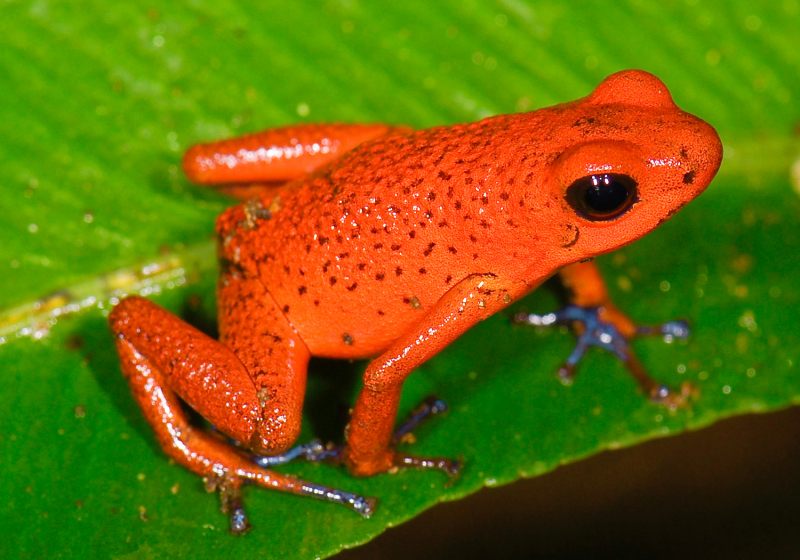
Photo: commons.wikimedia 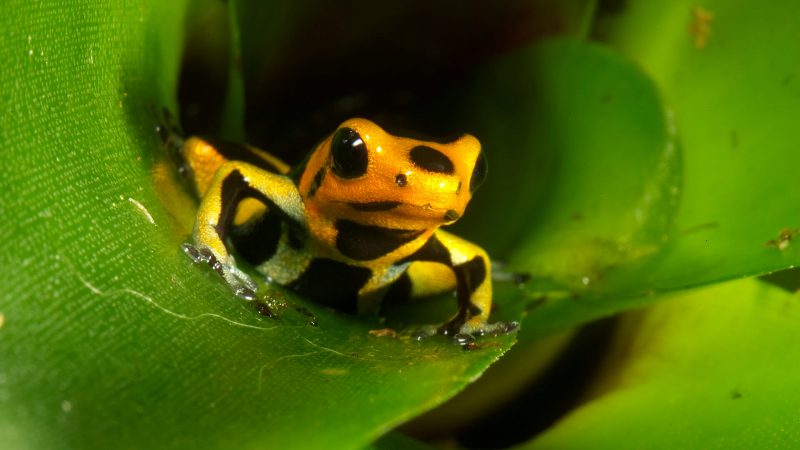
Photo: animals.sandiegozoo.org



























